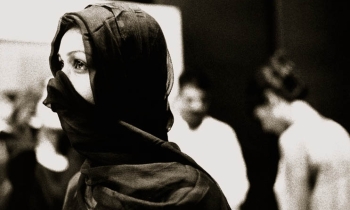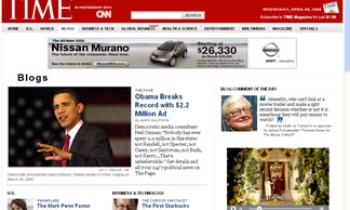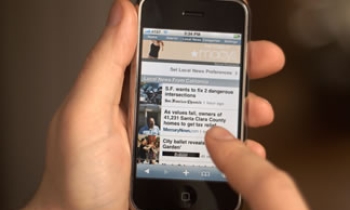With over 40 news channels, almost 100 million television homes and over 200 million viewers weekly, 24-hour news channels are on the upswing. A TAM media research conducted in six metros reveals that with television viewership doubling in the past three years, news has emerged as the most sought after genre. While the share of the Hindi news channels has increased by 78%, the English news channels have grown at least four times even as the share of regional news has quadrupled. A rosy picture indeed!
But there’s a flip side to it all. “Studies indicate that the level of public confidence in the media has been on a decline. There are accusations of arrogance, insensitivity, bias, inaccuracies, sensationalism, stereotypes, trivialisation, conflict of interest and disappearing lines between advertising and news on the one hand, and between news and views on the other,” says Dr N Bhaskara Rao, chairman of the Centre for Media Studies (CMS), New Delhi.
However, Akhila Sivadas, executive director, Centre for Advocacy and Media Research (CFAR), insists that TV channels are raising important issues even as they test the limits of ethical concerns. “Especially so in the way content is visualised in crime and reality shows,” she says. “They have to be conscious of the fine print of law here, especially in areas like juvenile crime, child abuse, etc.” TAM’s research findings reveal that the TVRs of crime shows have dropped considerably in recent months. “The crime shows are so distastefully done that you can’t watch it day after day. The falling TVRs reflect the resilience of the viewer,” feels Dibang of NDTV India.
Incidentally, NDTV was the first news channel to launch a crime show, which it later “consciously decided to discontinue”. IBN-7 too dropped Giraftar. However, the latter continues with Criminal and Zinda Hoon Main. Ashutosh, managing editor, IBN-7, defends the decision, “We want to sensitise our viewers.” Meanwhile, Vardaat, Sansani and Boundary Paar enjoy their share of airtime elsewhere.
In the days when Doordarshan had a free run of the field, news had a different look and feel and formed an important part of our viewing habits. But that was then. The genre has today become a snack in between the ‘K’ serials, says a report released by the Mumbai-based research agency Lodestar Media. Most viewers watch TV news for updates on cricket, social and crime-related news, the report adds. Explains Raju Santhanam of Zee News: “Today cricket, crime and cinema dominate news. But unlike the print media, we do not assume a public interest broadcaster’s role. We let the weekend TAM ratings steer our content.” However, the popular criticism still holds, as Lodestar Media’s report points out, that “Indian news channels are yet to completely mature when it comes to content!”
Says Monami Banerjee of Amnesty International India: “I would not like to believe that birthdays of film stars, Shahid Kapur’s lip-lock with Kareena or Anara Gupta’s CD merit more importance than development issues. Money and sensationalism seem to be the driving force for the news channels. No wonder S1 is a channel run by a builder and Total by a former CM of Haryana.”
Critics also question the depth of news reportage. Trivialisation of news is another serious issue. Consider this. A woman in Orissa falls in love with a snake and decides to get married to it. Well, one channel not just broke the news, but also covered the ceremony in great detail! The Oriya woman had her “15 minutes of fame”. So did Prince of Kurukshetra, the invisible driver of a Delhi car, Mika and Rakhi Sawant…
Prince’s rescue sent the number of SMSs received by Zee News to a record high. “We got only 25,000 SMSs during the Mumbai blasts. But when Prince was trapped in a pit, they ran into lakhs. We broke the story and it was public opinion that pushed us into a minute-by-minute coverage,” says Santhanam. But do SMSs really reflect public opinion? “The predicament of Prince probably challenged India’s ego. This one surely made us feel united as we watched uninterrupted (with exceptions of a few 555 beedi ads in between) for almost 50 hours. …A sum of one lakh rupees for featuring live on a dozen 24-hour news channel... advertisement can’t get cheaper than this,” reads a blog on mouthshut.com.
Chintamani Rao, CEO, India TV, feels that “Breaking News isn’t just about taking the lead by announcing a story. Data shows that the viewer stays with a channel only if it presents it with depth and responsibility and follows the story to its logical conclusion. Breaking News, our prime-time show, does well precisely for this reason.”
According to industry insiders, the channels seem to overlook the extent to which they go overboard about an issue in their race for the ‘exclusive’ tag. Labels like ‘First on’, ‘Only on’, ‘Exclusive’, ‘Special’ are bandied about freely. However, very few people actually ever remember which channel first broke a story, reveals Lodestar Media. Moreover, the channels tend to miss out on important stories in this scramble for eyeballs. “Hardly 25% of national news bulletins are about health, education, development, welfare, environment, etc. One-third of the news items of national channels in 2005 continued to be on politicians and party politics,” reveals Rao.
The CMS Media Lab observed that even as farmers were dying in Vidarbha, the news channels were preoccupied with a fashion show wardrobe malfunction on prime time. Star News went on with “Ramp par jalwe bikharne ke dauraan bikhar gayaa aanchal” and Aaj Tak with “…ramp par sarak gayee goree kee chunaree; …kal utaree cholee to aaj phat gaya libaas.” This is where the question of media ethics looms large. But are the channels unaware of the missing links? “It is not that they are oblivious. The only hitch that prevents them from responding to pressure on ethical issues is the feeling that it will somehow undermine their right to self-regulate and indirectly curtail the freedom of the press,” explains Sivadas.
Also worrisome is the changing face of news dissemination, which further undermines the accountability factor. Citizen journalists and SMS polls have become the new avatar of the humble ‘letters to the Editor’ columns. For instance, while CNN-IBN has an exclusive ‘Citizen Journalist’ programme, NDTV allows its audience to decide the priority of news stories through SMSs in ‘My News’. “My News has been a fruitful experiment. Our team tries to call back a few to know why they voted for a particular story,” says Sonia Singh, managing editor, NDTV 24X7.
But can the news sense of a common man and the credibility of citizen reporting be trusted? Says Rajdeep Sardesai, editor-in-Chief, CNN-IBN and IBN 7: “The credibility depends on the systems and checks that you have in place to see that citizen journalism doesn’t just become a gimmick. Occasionally it works beautifully — like the autistic child, whose father caught on camera the boy being denied entry into a plane, saying that he would be dangerous for fellow travellers. That is the ideal activist kind of citizen journalism.”
Insensitive reporting is another grey area. One channel, for instance, recently showed female foetuses floating in a nallah. On another channel, a journalist instigated a person in Bihar to immolate himself to get good visuals. Also, according to studies, news channels on several occasions ask eyewitnesses frivolous questions like ‘how many people are dead’ or ‘how are you feeling after having lost your arm in the blast?’ “Any professional channel or anchor would never ask an eyewitness how many people are dead. We attribute all figures to some authority. Our camera people are trained not to take close-ups of corpses or charred bodies,” says Dibang.
According to industry sources, one of the major factors that determine content for these channels are the weekend TAM ratings. So, the only options available are either to replicate last week’s model of news, do something afresh or just hype a non-issue. What makes the TAM ratings even more crucial is the fact that the inflow of ads hinges on them.
But what is it that makes the channels so vulnerable? Is it the advertising pie estimated at Rs 550 crore, which can make or break a channel? Not surprisingly enough, Aaj Tak recorded an ad-editorial ratio of 52.5% on prime time from October 1 to 17, according to the CMS media lab.
Says Supratim Banerjee, senior manager, A T Kearney: “In India, ads generate 80% of the revenue and only 20% comes from the subscription base. The mix will get better in the future as revenue reporting increases.” There are more bright spots — a FICCI-Pricewaterhouse Coopers report reveals that subscription revenues are projected to be the key growth driver for the Indian TV industry over the next five years. The buoyancy will drive homes to buy TV sets as well as to subscribe for pay services. New distribution platforms like DTH and IPTV will only increase the subscriber base.
24x7 news certainly has the potential to work. “Most of the channels are working on old strategy of creating one package for different time bands. The idea is to appear informative and catch the viewers interest as per his convenience,” informs L D Mandloi, director general, Doordarshan. Incidentally, DD, with only 20% recycling, telecasts a larger quantum of fresh content than any other channel in the country. A role model here, is it?
Tarun Tejpal, CEO and editor-in-chief of Tehelka, certainly sees the silver lining. “Just like all other things, news too is relying on trivia and fluff. But as long as its dominant metabolism remains public interest, there is little to worry. Just like the sting operations — good as long as it is done responsibly.”









